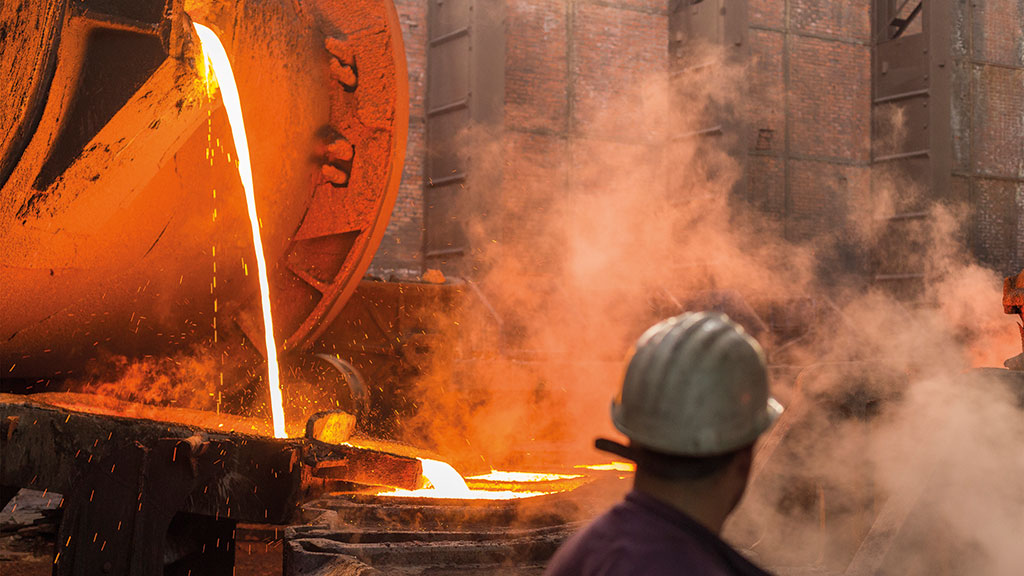Commodities look cheap
Gold may be on a bull run, but industrial commodities, including copper, zinc and aluminium, remain cheap.

Gold surged to a seven-year high earlier this month. Yet many industrial metals proved “laggards” in 2019, says Myra Saefong in Barron’s. Copper gained just 3.5% in 2019. Aluminium and zinc prices declined. Weakness in global manufacturing means that industrial metals were “left out of the commodities rally”.
Time to catch up?
“There are plenty of expensive assets in the world today,” says Rana Foroohar in the Financial Times, but most industrial commodities have remained “reliably cheap”. Indeed, they are “about as cheap relative to stocks as they have been in the past century”.
There are good reasons for this. Better technology and efficiency mean that the real price of industrial commodities has been trending downwards for 200 years. The received wisdom is that the trend will only gather pace; we live in a deflationary world where populations are ageing and economies are more oriented towards services than smokestacks.
MoneyWeek
Subscribe to MoneyWeek today and get your first six magazine issues absolutely FREE

Sign up to Money Morning
Don't miss the latest investment and personal finances news, market analysis, plus money-saving tips with our free twice-daily newsletter
Don't miss the latest investment and personal finances news, market analysis, plus money-saving tips with our free twice-daily newsletter
And yet there is a wildcard. From “deficit spending” to “the popping of a corporate debt bubble” there are reasons to think that the dollar is set to weaken. Commodities, which move inversely to the greenback, would then be in for a rally.
Chinese industrial demand has been a key driver of base metal prices this millennium. Yet even if the Middle Kingdom continues to slow, “stronger growth in other emerging markets” should take up the slack, says Kieran Clancy in Capital Economics. The consultancy forecasts that “base metals will fare better than precious metals in 2020”, thanks to a “modest” global economic recovery and “strained supply”. Capital Economics thinks that “copper and nickel will lead the pack”.
Copper is the key base metal to watch, agrees Yvonne Yue Li on Bloomberg. Its widespread use in wiring, construction and electronics makes “Dr. Copper” a good barometer of the global economy. Analysts are bullish. The trade war held back investment in new capacity last year. Social tensions in Chile, the world’s-biggest producer, are another supply constraint. The result is that worldwide copper inventories have shrunk 37% since July.
Some industrial metals are already in bull territory, notes Saefong. Palladium, used in catalytic converters, has leapt more than 60% over the past year. Platinum, which has similar applications, is up 20%. Palladium has now gained 190% over the past three years and the momentum looks set to continue. The metal’s supply deficit is likely to continue for several years, says Steven Dunn of Aberdeen Standard Investments. Stricter emissions standards are also boosting demand. “Strong fundamentals exist for palladium to continue to test new highs.”
The world’s most precious metal

The year’s “hottest trade” to date “isn’t high-flying tech stocks, but a little-known metal”, says Pippa Stevens on CNBC. Rarer than gold, palladium and platinum, rhodium is the world’s most precious metal. And this month it has proved particularly precious, soaring to a 12-year high of around $8,000 an ounce. So far this year it has gained over 30%, while in the past four years the price has jumped 12-fold. Like palladium, rhodium is mined as a byproduct of platinum and nickel, and is used mainly in catalytic converters. The market is very small, however, so any shifts in demand and supply can cause huge ups and downs in the price. The triggers for the latest surge were weak supply and strong demand from Asia.
Get the latest financial news, insights and expert analysis from our award-winning MoneyWeek team, to help you understand what really matters when it comes to your finances.
Alex is an investment writer who has been contributing to MoneyWeek since 2015. He has been the magazine’s markets editor since 2019.
Alex has a passion for demystifying the often arcane world of finance for a general readership. While financial media tends to focus compulsively on the latest trend, the best opportunities can lie forgotten elsewhere.
He is especially interested in European equities – where his fluent French helps him to cover the continent’s largest bourse – and emerging markets, where his experience living in Beijing, and conversational Chinese, prove useful.
Hailing from Leeds, he studied Philosophy, Politics and Economics at the University of Oxford. He also holds a Master of Public Health from the University of Manchester.
-
 Why pension transfers are so tricky
Why pension transfers are so trickyInvestors could lose out when they do a pension transfer, as the process is fraught with risk and requires advice, says David Prosser
-
 The political economy of Clarkson’s Farm
The political economy of Clarkson’s FarmOpinion Clarkson’s Farm is an amusing TV show that proves to be an insightful portrayal of political and economic life, says Stuart Watkins